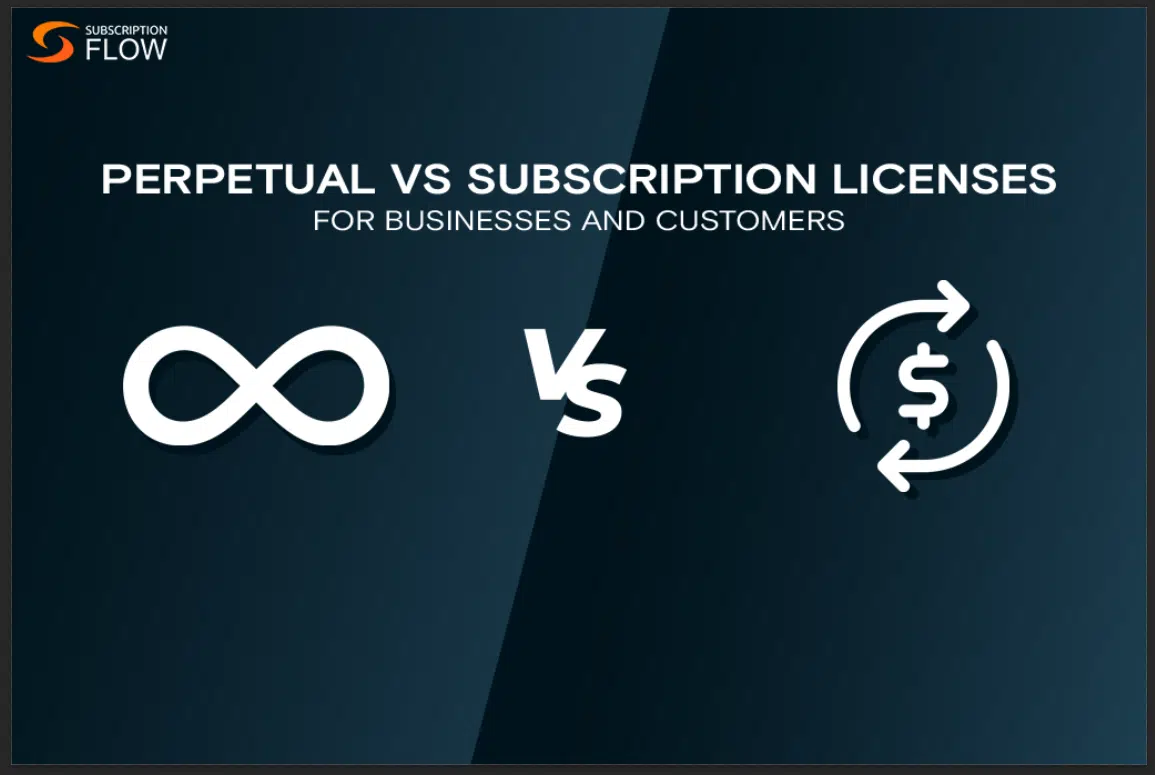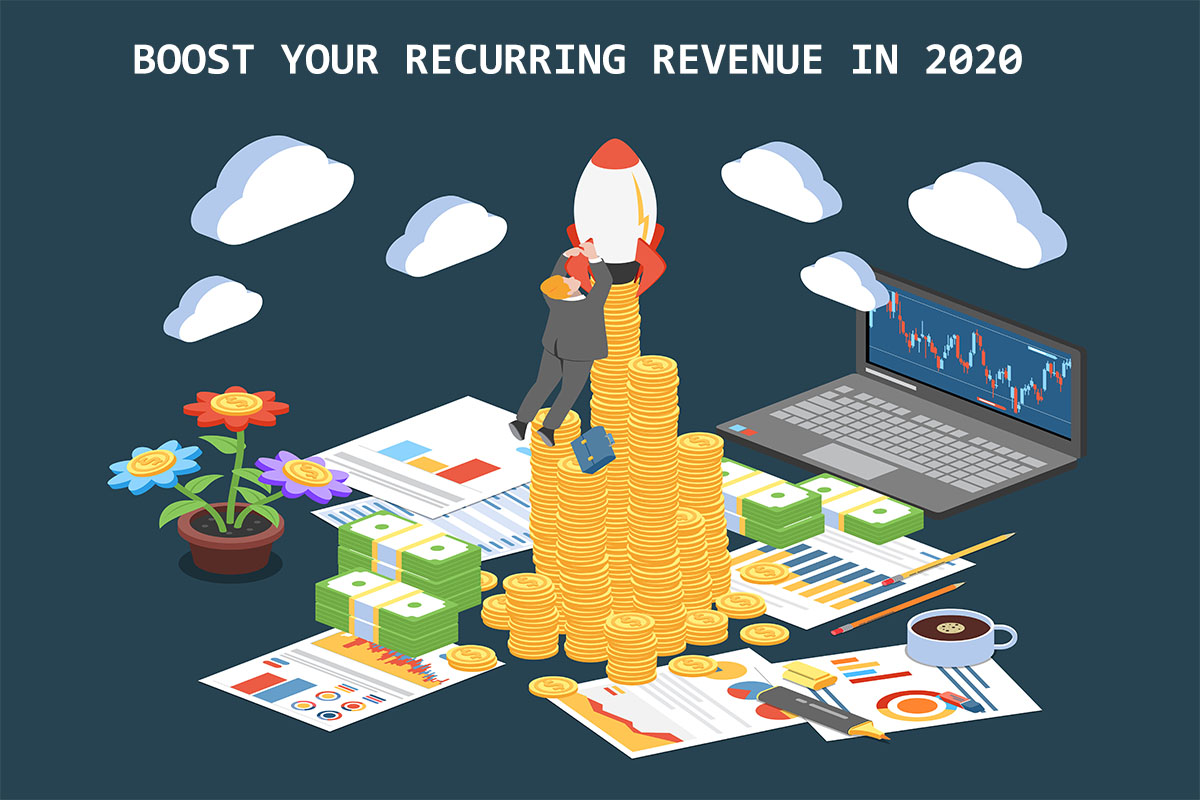
Perpetual License vs. Subscriptions: Pros and Cons for Customers and Businesses
Should you go for a perpetual license or a subscription?
What is a Perpetual License in SaaS?
A perpetual license is the legal ownership right you get for any product such as a software for an up-front one-time cost.
Companies such as Adobe offered its products like Photoshop for an upfront cost for a significant price ranging from $700-$1000.
Read More: Challenges & Opportunities For Automakers Who Are Turning Towards Car Subscription Services
What is a Subscription?
When a company works with a subscription business model, it offers its users the product or service for as long as the customer stays subscribed.
You don’t ever own the rights to the instance or copy of the software/product you’re using.
And your accessibility to it can be discontinued whenever you stop paying. An example is of Adobe’s shift to the Creative Cloud.
In this model, Adobe offers customers almost all its products for a significantly lower recurring monthly cost.
Perpetual License vs Subscription: Which is Better?
Since the start of the decade, the debate has raged on with corporates and consumers on both sides of the business model question.
While customers are divided between what’s more affordable and suited to them, companies are trying to prioritize profitability.
The subscription revolution that has been noticed in the last decade has made everyone wonder whether they’re making the best decision.
And with markets piling up with alternatives, user experiences and ROIs are revealing the answers for many.
However, depending upon which perspective you’re looking at the question from, your answer might vary.
For example, from a business standpoint, offering a subscription model like Porsche might make more sense.
Whereas, a user might prefer buying a game’s perpetual license in order to be able to play it any time in their life they want.
Therefore, listed below are researched advantages and disadvantages from both perspectives to help you make a better decision.
Here’s an overview of the pros and cons of opting for perpetual license vs. subscriptions for businesses as well as customers:
Perpetual License vs Subscription for Businesses
In this section, we’ll look at both the business models from the perspective of a business. If you’re a company considering switching your revenue model, here’s what you need to know.
Pros of Perpetual Licenses for Businesses
Upfront Costs
The first thing that appeals to most businesses is the idea of collecting massive revenue upfront. As stated above, companies like Porsche or even Adobe couldn’t think about shifting to the subscription-based model.
Adobe launched Photoshop in 1987, and at the time, there was no concept of selling subscriptions online. That’s why the more robust editions of Photoshop went for almost $700-1000.
Companies like Microsoft also offered their Office suite for an upfront fee that provided users with a perpetual license. Though companies and professionals were happy with their one-time purchases, it restricted accessibility for majority of the audiences.
Predictable Forecasts
Given the troublesome task of figuring out how to price your product, it’s always easier to go with a one-time purchase revenue model.
This is because not only can you decide on a price easily, but you can also process all your transactions smoothly.
And just like that, you’ll have a much easier time predicting revenue forecasts by assessing your product’s performance.
Support Only for Current Products
Businesses like game development studios have often gotten away with the practice of rendering old games obsolete.
For example, if you buy a perpetual license for a game you like playing online, you only have license to the game.
This doesn’t mean that the company is responsible or liable to release updates, bug fixes or even keep the servers up.
So, while you do have your copy of the game forever, you can’t assume that a company will keep spending the costs of running their servers and employing maintenance teams.
Cons of Perpetual Licenses for Businesses
Reduced Target Market
Though the above make perpetual licenses sound like a dream for a business, there are certain significant cons associated with it.
Firstly, since not everyone can afford the upfront cost of a $1000 product, this means target market is restricted.
Not only are you now looking for professionals and companies that are in need of your product, but you’ll also have to consider their spending budget.
Pressure to Innovate
The pressure to innovate is on the companies that are providing perpetual licenses.
That’s because once you offer a product in the market, you can’t expect users to buy every new edition you give out.
For example, people with Photoshop CC17 wouldn’t want to buy CC18 unless it was offering considerable improvements.
In fact, customers preferred to keep their outdated copies as long as it continued to provide the basic functionality.
This was specifically because they didn’t feel the need to buy the product again at full price the next year.
One-time Revenue
Though it seems lucrative, a one-time purchase can actually limit your customer’s lifetime value for your business.
As mentioned above, every buyer who’s purchased your product will not consider buying it again anytime soon.
This means that companies have to instantly start working on newer versions of newer software altogether to generate more revenue.
Read More: Why Value-Based Pricing Approach Is Important For Your SaaS Business
Pros of Subscriptions for Businesses
Maximized Revenue Generation
Subscriptions have proved to be better than one-off purchases time and again.
The chances of getting more subscribers are substantially high, meaning there’s a higher chance of getting recurring revenue.
Though a company like Adobe didn’t take long to switch to a more convenient model for themselves and their customers with the Creative Cloud, they weren’t the only players or in fact the only industry testing out the subscription model.
Porsche itself has revolutionized the way automotive industry players are thinking about their business.
The Porsche subscription package allows consumers to choose the model of their favorite Porsche they want to drive.
And starting from only a $1000 a month, they can drive a luxury sports car that costs a million.
Read More: You Need A Recurring Revenue Stream to Draw Success in 2021 And Onwards
Experimentation Room
Subscription business models allow businesses to try out a variety of configurations and operational models.
An example of this is trying out subscription rundles and coupling old products, introducing reward coupons, etc.
There are several ways that a business can engage with their audience and entice them into subscribing.
Once you have a customer base that can help you identify your buyer persona, you can easily upsell and cross-sell a variety of your products.
Read More: Is Customer Churn Troublesome? Opt For Subscription Box Business Model
Ability to Add On Features
Subscriptions are mostly offered by SaaS companies that provide cloud solutions.
These solutions are not only top-tier in their respective functionality, but they can also be customized to any extent.
This means that businesses can charge extra for add-ons and additional features that they introduce in their products.
However, even in the automotive industry, companies are introducing cars that come with locked add-ons.
Users can access these features such as heated seats, rear vents, etc. by upgrading their plans and paying the extra cost.
Read More: How To Diversify Your Revenue Streams With Esports & Gaming Subscriptions
Cons of Subscriptions for Businesses
Increased Churn Rate
Though the subscription business model looks lucrative, there are certain limitations that it comes with.
One of these is the chance of having your customers churn out. For a subscription-based business, the longer a customer stays subscribed, the more value they generate.
Although the conversion rate may increase, so is the risk of the same customers churning over time.
Whether it be voluntary or involuntary, churning is bad for business and reducing its chances is the ultimate goal.
Unpredictable Revenue
Apart from managing the recurring billing process of a subscription-based business, the major problem faced by companies is predicting revenue.
As discussed above, subscribers are likely to churn.
And since it’s hard to predict when someone signs on and churns, it’s just as difficult to forecast revenues.
Accountants and financial analysts looking to provide analytics for smart business decisions are likely to face problems with subscription models.
Increased Competition in Markets
Customers churn out voluntarily either because they don’t need the product any longer or they’ve found something better.
The latter is more of a problem because in business terms, that’s defined as lost revenue. And it mostly happens because competitors in the market are providing better user experience or rates.
When it comes to the subscription market, there’s a plethora of big-time players offering competitive pricing and high-tier features.
That’s why businesses that opt for this model have to constantly focus on providing improved quality of content and service.
Subscription vs Perpetual License for Customers
Pros of Perpetual Licenses for Customers
Timeless Value
Customers that go for perpetual licenses get the lifetime value of a product. That means that the product remains the same for you throughout.
This point is best understood if you consider buying a game’s perpetual license.
Even if the developers stop releasing future updates and shut their servers down, your game will continue working.
So long as something doesn’t require a network connection to servers that require upkeep and maintenance, its value will remain constant.
Keep Full Functionality
When it comes to buying a software’s perpetual license, you’re buying all the functionalities that come with it.
This means you don’t have to pay for using a specific feature or have to update in order to keep using your software.
This is most important and preferable for If you admire the features you get with your solution, you will continue to have it for as long as you want.
Optional Annual Support
Customers that purchase a perpetual license have the option to opt for annual support contracts.
These contracts entail support for a limited time but include bug fixes and technical queries along with a few updates.
Cons of Perpetual Licenses for Customers
No Support
Companies don’t provide support for perpetual license holders as it’s not their priority.
Since it’s not going to bring in more revenue, there is no need for a company to provide support.
Up-Front Costs
There’s no denying that if companies like Adobe continued to sell tools like Photoshop for their full price, no one would buy it.
Only a handful of organizations and professional designers would be able to afford it for daily use.
Inevitable Obsolescence
All previous versions of a software are going to become obsolete with time and once that happens, you won’t be able to use the network features and other online functionalities.
As mentioned above, there is no support offered by companies for outdated products, meaning that once your product goes obsolete, you can’t expect any fixes or support.
A major downfall of this is when operating systems are upgraded overtime, several programs require updates to be compatible.
Your perpetual license becomes useless for such software that become obsolete.
Pros of Subscriptions for Customers
Affordable Recurring Fee
The best part about subscriptions is that they’re extremely affordable compared to perpetual licenses because there is no upfront cost that will be charged on the first time.
Compared to the full price, Adobe charges only $10 for monthly subscriptions that offer several of its products.
Right to Cancel
Users appreciate the opportunity to be able to cancel their subscriptions anytime they feel like they don’t need to use the product.
Subscriptions are more favorable for customers because they don’t want to spend tons on programs they don’t need.
Continued Support
Subscriptions come with continued support. Whether it’s technical assistance or queries and demos.
Companies are incentivized to provide the best customer experience to their users in order to keep them from churning.
This raises the bar in the market for competitors hoping to make it big in their respective industries.
Read More: Why & How After sale Services Can Enhance Customer Retention For Subscription Business
Upgrades and Updates
Subscriptions come with upgrades and updates and you don’t have to pay extra for anything.
Though these updates can be small, they’re still preferable over obsolete programs because you don’t have to pay for newer versions separately.
Cons of Subscriptions for Customers
Costs Add Up Overtime
Subscription offers from many SaaS companies have proven to become equal to or even more than their full-price over time.
This means that you’re actually paying more than you would’ve if you’d purchased the product all those months ago.
Locked Add-Ons and Upgrades
Many subscription offers often advertise their best features to get you interested but then lock them behind higher tier packages and premium bundles that are pricier than others.
People who are in need of upgrades and add-ons have to pay additional money for it on top of their recurring subscription fee.
In a Nutshell
In summary, the main difference between perpetual license vs subscriptions is the value of money you pay for the product/service.
What works for you will depend upon the budget, time and type of use you’re expecting with your product.
If you’re considering switching your business model or are looking to streamline your current one, make sure to contact SubscriptionFlow to get a consultation!












